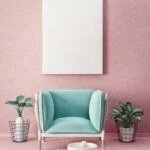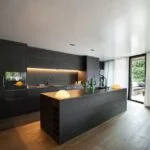Are you wondering, “How should I decorate my home?” Home decor is an essential aspect of creating a space that reflects your personal style and provides a comfortable, inviting atmosphere for you and your guests.
Not only does it allow you to showcase your individuality, but it also has the power to influence your mood and overall well-being. In this article, we will explore the importance of home decor and provide valuable tips and insights on how to enhance your living space.
Understanding your personal style is crucial when it comes to home decor. Whether you prefer a minimalist, modern look or a cozy, rustic feel, finding your decorative direction sets the foundation for creating a cohesive and harmonious living environment. We will delve into ways to discover and embrace your unique aesthetic preferences, allowing you to curate a home that truly feels like yours.
The impact of color on mood and atmosphere cannot be overstated when it comes to interior design. Choosing the right color scheme can significantly influence the vibe of a room, affecting how you feel when you’re in it. From soothing blues to energizing yellows, we will explore the psychology behind various colors and provide guidance on selecting the perfect palette for your home.
Understanding Your Personal Style
When it comes to decorating your home, understanding your personal style is crucial in finding the right decorative direction. Your personal style should reflect your personality and taste, creating a space that feels authentically yours. But how do you determine your personal style when it comes to home decor?
Assess Your Preferences
Take some time to assess your preferences when it comes to colors, patterns, and textures. Do you lean towards bold and vibrant hues, or are you drawn to more muted tones? Are you a fan of clean lines and minimalistic designs, or do you prefer a cozy, eclectic look? Understanding what appeals to you visually is the first step in determining your personal style.
Seek Inspiration
Browse home decor magazines, websites, and social media platforms for inspiration. Pay attention to the styles that catch your eye and make note of common themes or elements that resonate with you. You can also visit design showrooms and home stores to see different styles in person and get a feel for what speaks to you.
Experiment With Samples
If you’re still unsure about your personal style, consider experimenting with samples. Paint swatches, fabric samples, and small decor pieces can help you visualize how different styles will look in your space before committing to a full design scheme. Trying out different elements will give you a better idea of what truly resonates with you.
Understanding your personal style is the foundation of successful home decor. By taking the time to assess your preferences, seeking inspiration, and experimenting with samples, you can narrow down the decorative direction that best suits your unique taste and personality when considering how shoud i decorate my home.
Choosing a Color Scheme
Choosing the right color scheme for your home is crucial in creating the right atmosphere and setting the mood for each room. The colors you choose can have a significant impact on how you feel and behave in a space, so it’s important to consider this when decorating your home. Here are some tips on how to choose the perfect color scheme for your home:
Understanding Color Psychology
Before deciding on a color scheme, it’s important to understand the psychology behind different colors. For example, warm colors like red, orange, and yellow can create a sense of energy and warmth, while cool colors like blue and green can evoke feelings of calmness and relaxation.
Neutral colors such as white, beige, and gray can provide a sense of balance and versatility. By understanding these principles, you can choose colors that will help achieve the desired mood for each room in your home.
Creating Cohesion Throughout Your Home
When selecting a color scheme for your home, it’s essential to create cohesion throughout the space. This doesn’t mean every room needs to be painted the same color, but rather that there should be some consistency in the overall palette. This could mean using different shades of the same color or choosing complementary colors that work well together. Creating cohesion will help tie your home together and make it feel more harmonious.
Experimenting With Different Shades
Don’t be afraid to experiment with different shades within your chosen color scheme. Lighter shades can make a room feel more spacious and airy, while darker shades can add depth and drama. Mixing and matching different shades of the same color can also add visual interest to a room. Consider testing out paint samples or using online visualization tools to see how different colors will look in your space before making a final decision.
By understanding color psychology, creating cohesion throughout your home, and experimenting with different shades, you can choose a color scheme that enhances the mood and atmosphere of your living space. Ultimately, finding the right color scheme for your home will depend on your personal preferences and the ambiance you want to create in each room.
Furniture and Layout
When it comes to decorating your home, furniture and layout play a crucial role in maximizing your space and creating a comfortable environment. The right furniture and layout can enhance the functionality of each room, while also contributing to the overall aesthetic of your home. So, how should I decorate my home with furniture and layout in mind? Here are some tips to consider.
First and foremost, it’s important to assess the size and shape of each room before deciding on furniture placement. This will help you determine the best layout for each space, taking into account factors such as natural light, traffic flow, and focal points. For example, in a living room with a fireplace, arranging the furniture around this focal point can create a cozy and inviting atmosphere.
Additionally, selecting the right furniture pieces is essential for making the most of your space. For smaller rooms, consider multi-functional furniture such as sleeper sofas or coffee tables with built-in storage. In larger rooms, sectional sofas can provide ample seating without overwhelming the space. When choosing furniture, be mindful of scale and proportion to ensure that each piece complements the room without making it feel crowded.
Lastly, don’t be afraid to experiment with different layout options until you find what works best for each room. Sometimes simply rearranging the existing furniture can make a significant difference in how the space looks and feels. By taking these factors into consideration when decorating your home with furniture and layout in mind, you can create a harmonious and functional living environment that reflects your personal style.
| Tip | Description |
|---|---|
| Assess Room Size | Determine best layout based on size & shape of each room |
| Multi-Functional Furniture | Select pieces like sleeper sofas or storage coffee tables for smaller spaces |
| Experiment with Layouts | Rearrange existing furniture to find what works best for each room |
Accent Pieces and Accessories
Deciding how to decorate your home is an exciting and personal journey. Once you have chosen a color scheme and basic layout, it’s time to add personality to your space with accent pieces and accessories. The right decor can truly transform a room and make it feel like home, so it’s essential to choose items that speak to your personal style and enhance the overall atmosphere of your space.
When selecting accent pieces, consider items that hold personal significance or reflect your interests. Whether it’s artwork, sculptures, or unique statement pieces, these additions should evoke a sense of joy and comfort for you and your guests. Additionally, incorporating items from different cultures or travels can infuse your home with a touch of global inspiration.
Accessories such as throw pillows, rugs, and curtains play a crucial role in tying together the overall look of a room. Consider mixing textures and patterns to add depth and visual interest to your space. By layering different elements together, you can create a cozy and inviting atmosphere that showcases your individual taste.
| Accent Pieces | Accessories |
|---|---|
| Artwork | Throw pillows |
| Sculptures | Rugs |
| Statement pieces | Curtains |
Incorporating Plants and Greenery
Bringing the outdoors inside is a fantastic way to not only add visual interest to your home, but also improve air quality and create a calming atmosphere. Whether you have a green thumb or struggle to keep plants alive, there are many options for incorporating plants and greenery into your home decor.
Here are some ideas on how to bring nature indoors:
- Create a plant wall: Install shelves or hangers on a wall and fill them with various potted plants or hanging vines. This can create a stunning visual display and also save space.
- Choose low-maintenance plants: If you’re a beginner or don’t have much time for plant care, consider options like succulents, snake plants, or pothos that require minimal attention.
- Incorporate botanical prints: If caring for live plants isn’t feasible, consider adding artwork, textiles, or wallpaper with botanical motifs to bring the essence of nature into your home.
- Use natural materials: Integrate natural materials such as wood, wicker, and rattan furniture pieces along with textiles like linen and cotton to complement the look of indoor greenery.
By incorporating plants and greenery into your home decor, you can create a serene and inviting environment while adding a touch of natural beauty to your living spaces. Whether you opt for live plants or choose other nature-inspired elements, bringing the outdoors inside is sure to enhance the overall appeal of your home.
Tips for Small Spaces
When it comes to decorating a small space, the key is to maximize every inch in order to make the area both functional and visually appealing. One of the best ways to create the illusion of more space is by utilizing multi-functional furniture. For example, a sofa that doubles as a pull-out bed or a coffee table with storage compartments can help you make the most of limited square footage.
Another tip for small spaces is to utilize vertical wall space for storage. Installing shelves or wall-mounted cabinets can free up valuable floor space while still providing storage for books, decor, or even everyday items. Additionally, opting for furniture with exposed legs can also create a sense of openness and airiness in a small room.
Choosing the right color scheme is also crucial when decorating a small space. Lighter colors such as soft neutrals, pale blues, or pastel hues can make a room feel more open and spacious. Additionally, using mirrors strategically can help reflect light and give the illusion of more depth in a small area. By carefully planning your color palette and incorporating reflective surfaces, you can make your small space feel bigger and more inviting.
Incorporating natural light into your small space is another important aspect of home decor. Not only does natural light make any room feel brighter and more spacious, but it also has numerous health benefits such as improving mood and boosting productivity. Consider removing heavy window coverings or strategically placing mirrors to bounce light throughout the room in order to maximize the impact of natural light in your small space.
DIY Decor
When it comes to decorating your home, one of the best ways to add a personal touch and showcase your unique style is through DIY decor. Not only does DIY decor allow you to customize your space to fit your personality, but it also gives you the opportunity to save money and create one-of-a-kind pieces that can’t be found in any store.
Whether you’re crafty or not, there are plenty of simple and fun projects that can add character and charm to your home.
To get started with DIY decor, consider incorporating some of the following projects into your home:
- Create a gallery wall using framed photos, artwork, and other meaningful pieces
- Personalize plain throw pillows with fabric paint, embroidery, or iron-on transfers
- Repurpose old furniture with a fresh coat of paint or new hardware
- Make your own artwork using canvases, paints, and stencils
Another way to add a personal touch to your home is by integrating sentimental items or heirlooms into your decor. Whether it’s displaying family photographs, using vintage hand-me-downs as statement pieces, or showcasing travel souvenirs from memorable trips, these items can tell a story and bring warmth and nostalgia to your living space.
Embracing DIY decor and incorporating personal items not only adds character to your home but also creates an inviting and comforting atmosphere for both you and your guests.
Ultimately, the key to successful DIY decor is finding projects that excite you and reflect your individual taste. Don’t be afraid to experiment with different ideas and materials until you find the perfect combination that makes your house truly feel like a home. So when asking yourself “how should I decorate my home?” remember that adding a personal touch through DIY decor can make all the difference.
Conclusion
In conclusion, decorating your home is an important aspect of creating a space that not only looks beautiful but also feels like a true reflection of your personality and style. By understanding your personal style, choosing the right color scheme, optimizing furniture layout, incorporating accent pieces and accessories, bringing in plants and greenery, and making the most of small spaces, you can create a home that truly feels like yours.
When it comes to home decor, there are endless possibilities and options to consider. The key is to find what works best for you and your unique taste. Whether you prefer a minimalist aesthetic or love to fill every corner with vibrant colors and patterns, the choice is ultimately yours. Consider exploring DIY decor projects as well to add a personal touch to your living space.
When asking yourself “how should I decorate my home,” remember that the goal is not perfection but rather creating an environment that brings you joy and comfort. So take your time, experiment with different elements, and have fun with the process. Your home should be a place where you feel at ease and surrounded by things that make you happy. Ultimately, it’s about creating a space that feels like home.
Frequently Asked Questions
How Do I Decide How Do You Decorate My House?
When deciding how to decorate your house, consider your personal style, the function of each room, and the existing color scheme and architecture. It’s important to create a cohesive look that reflects your taste and meets the needs of your household.
What Is the 2 3 Rule in Decorating?
The 2 3 rule in decorating refers to the idea that a room should be decorated with 2/3 of one color and 1/3 of another. This creates a balanced and visually appealing space. It’s a simple guideline that can help with color coordination in interior design.
What Is the Best Order to Decorate a House In?
The best order to decorate a house in is typically to start with the larger, more permanent elements such as flooring and wall color, then move on to furniture, followed by smaller decor items like rugs, curtains, and artwork. This helps create a solid foundation for the room’s design before adding finishing touches.

I’m thrilled to be your companion on this exciting journey through the world of home decor and design. With a passion for turning houses into homes and a keen eye for the finer details, I’m here to help you transform your living spaces into beautiful, functional, and meaningful havens.





